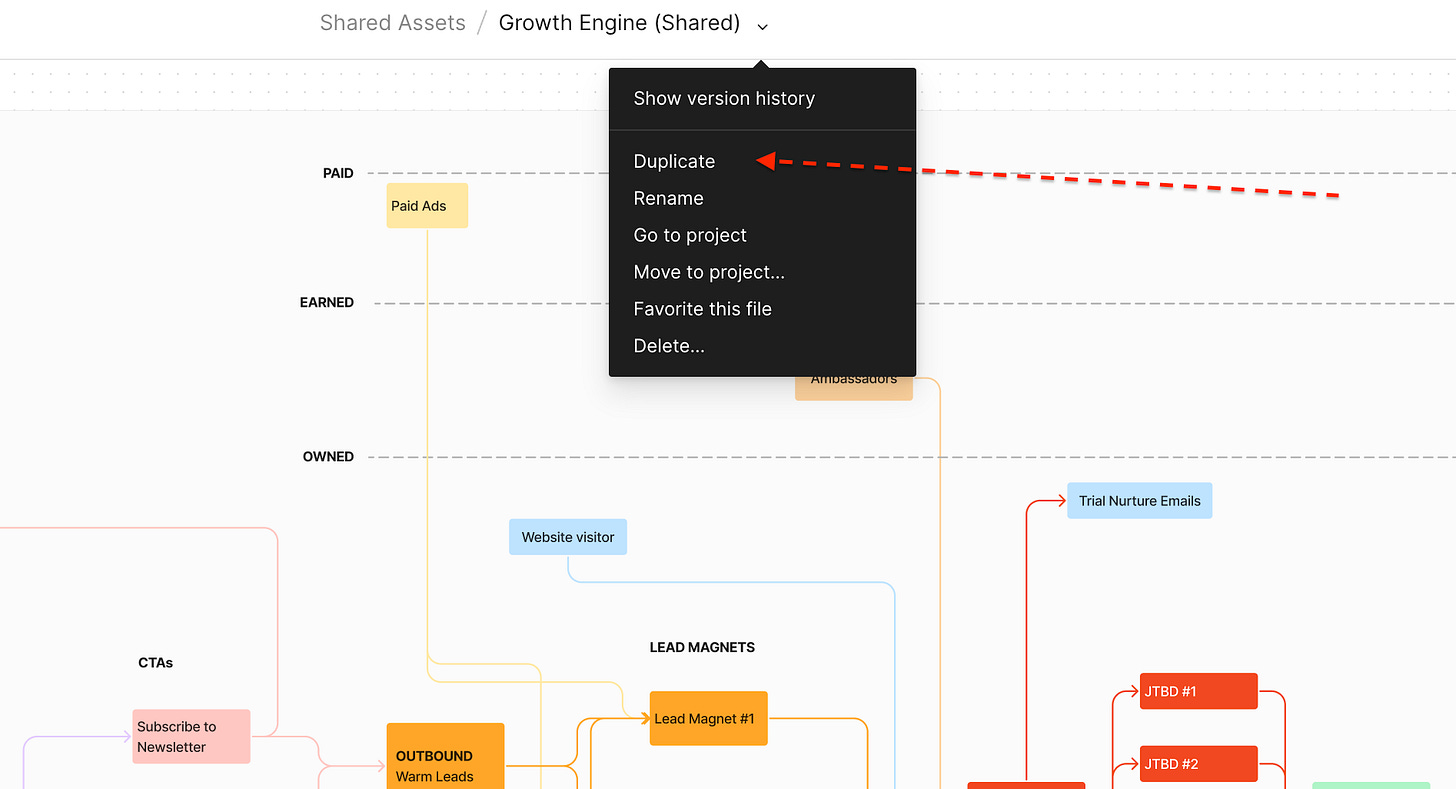🏴☠️ ⚡️ The Growth Engine Diagram We're Using to Generate 20% YoY Growth (Operating Concept)
We are Acquiring and Operating Micro SaaS firms in public. Join us every Saturday morning for acquisition deal case studies, operational tactics, growth frameworks, performance analysis, and more...
TABLE OF CONTENTS:
RESOURCE / CONCEPT
Growth Engine Diagram
Quick Orientation
APPLICATIONS
How to Make a Copy For Yourself
Most Important Questions and Inputs to Customize
⚙️ OPERATING CONCEPT
📺 WATCH:
📻 LISTEN:
RESOURCE / CONCEPT:
(CLICK HERE TO ACCESS THE FIGMA TEMPLATE)
QUICK ORIENTATION:
The diagram reads from left to right, in accordance with the user journey. Furthermore, content (long and short form) is the assumed tip of the spear for building a relevant audience.
You’ll notice ‘growth loops’ where an output in the diagram feeds back into the inputs. For example, evangelists generate trial users via word-of-mouth, and short-form content generates subscribers to long-form content. These loops are critical for establishing flywheels.
CTAs (aka Calls-to-Action): the things you ask of your audience as you move from giving value toward monetization.
Lead Magnets: the hyper-valuable stuff you give away to build trust.
Warm Leads: the portion of your audience that has opted into communication via your newsletter or asking to receive a lead magnet, etc.
Cold Leads: relevant strangers you can contact (via email, DM, etc.).
Owned: the assets and digital surface area you own.
Earned: Assets that are a function of delighted users.
Paid: any exposure you pay for, mostly ads, sponsorships, etc.
Tech Stack: the tooling associated with each area of the engine.
APPLICATIONS:
If it’s the case your SaaS caters to small and mid-sized businesses (SMB) without the need for human sales (SLG) or implementation resources, this is a pretty turn-key template. If you do utilize SLG, I highly recommend reviewing this diagram by Winning by Design as a point of departure.
Regardless, make a copy of the template so you can modify it however you see fit.
Now that you have your own version of the diagram, here are some important questions and inputs:
Digital Surface Area: assuming you have a marketing website, I’d start by dialing in the long and short-form content sections to reflect the most relevant channels for your audience and the content themes / formats in place for each channel.
Channels: Are you buying ads? Running cold outbound? Sponsoring conferences? Supporting a digital forum (ie Facebook or Slack Group)?
CTAs & Lead Magnets: what are you asking of your audience to qualify their fit with your SaaS, give value, and build trust as you work them toward buying or trialing behaviors?
Jobs-to-be-Done (JTBDs): Do you have defined customer segments? If so, does the JTBD vary based on segment? If so, account for the trial user journey (and activation metrics) for each respective segment.
Growth Loops: You want to be SUPER thoughtful here and ensure your growth engine has very intentional loops, where an output feeds back into the machine as an input. Growth loops are required to break out of linear growth. They are also much more durable than other tactics like paid ads, which tend to provide diminishing returns over time.





